
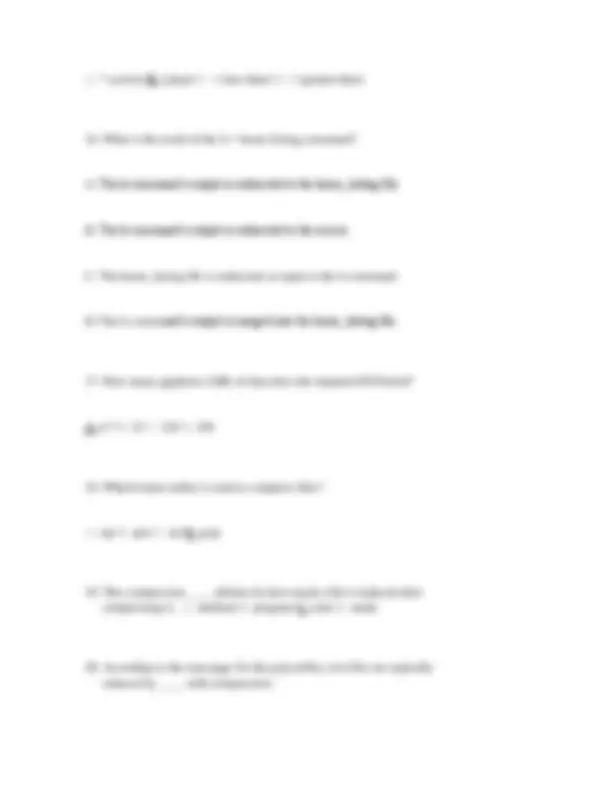
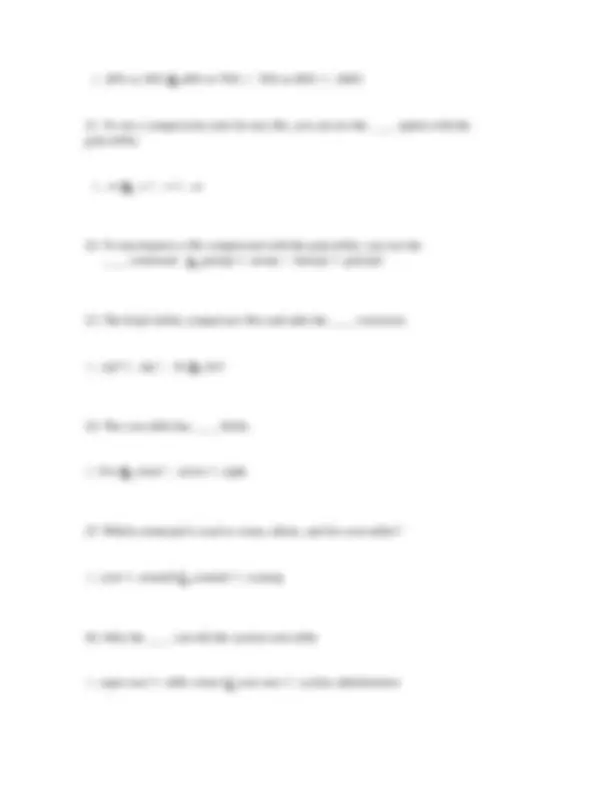

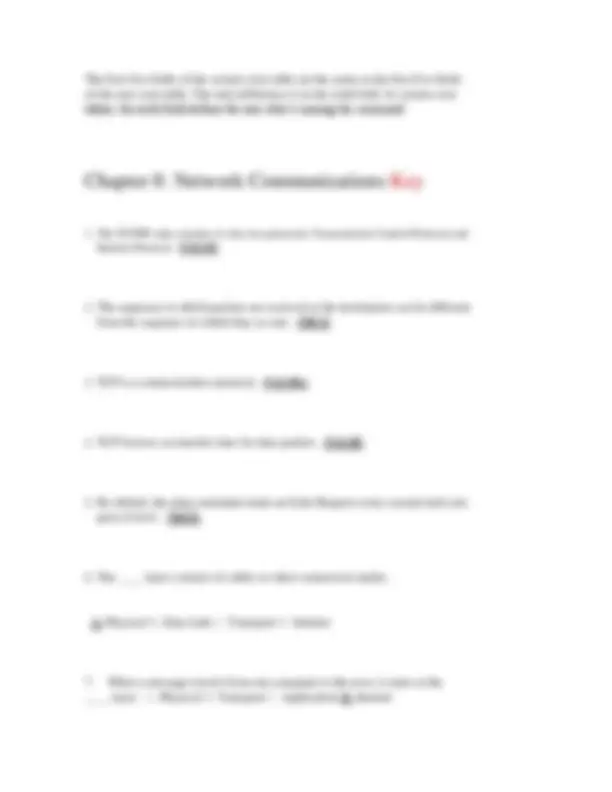
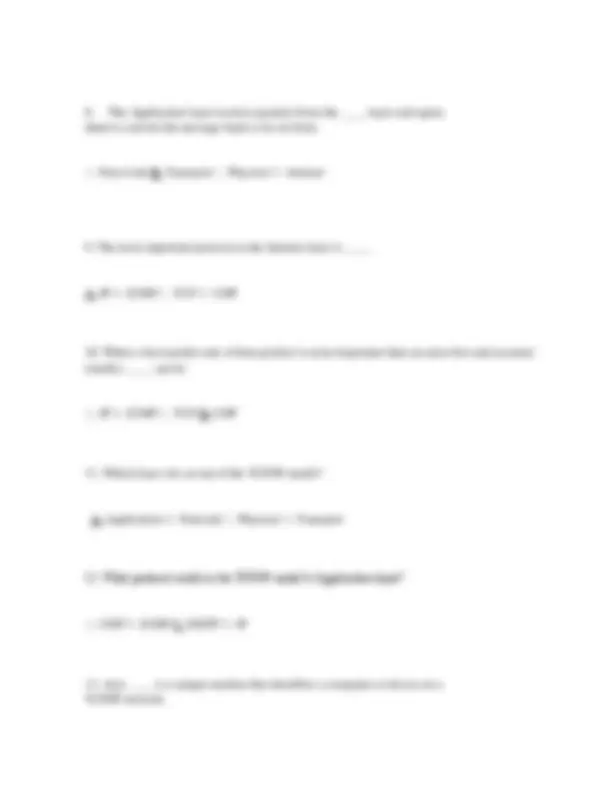
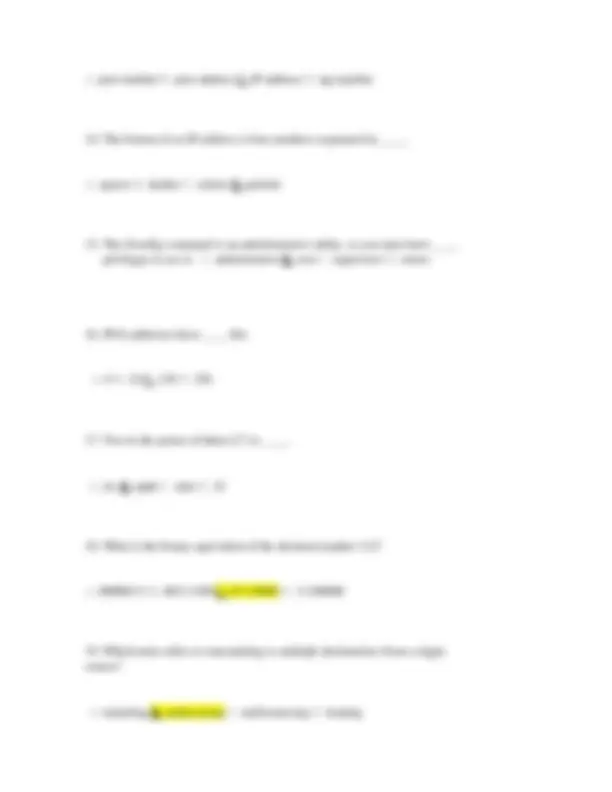
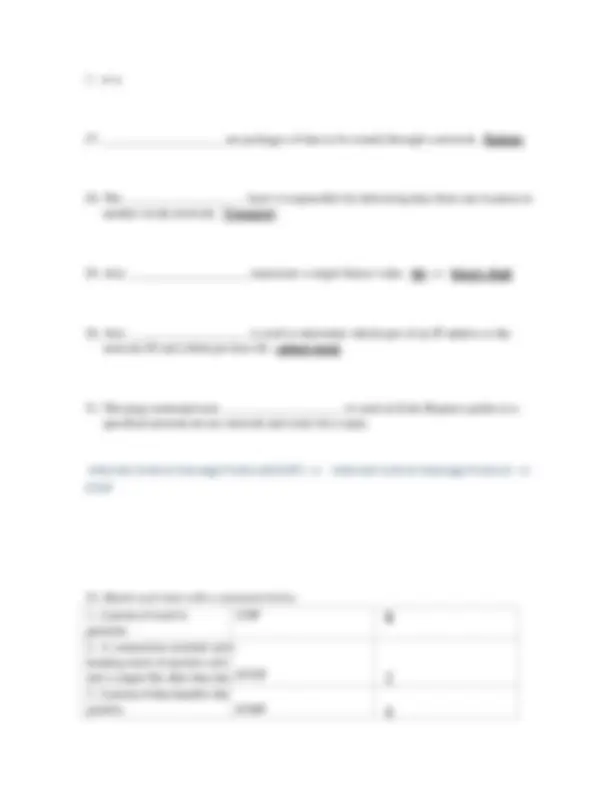
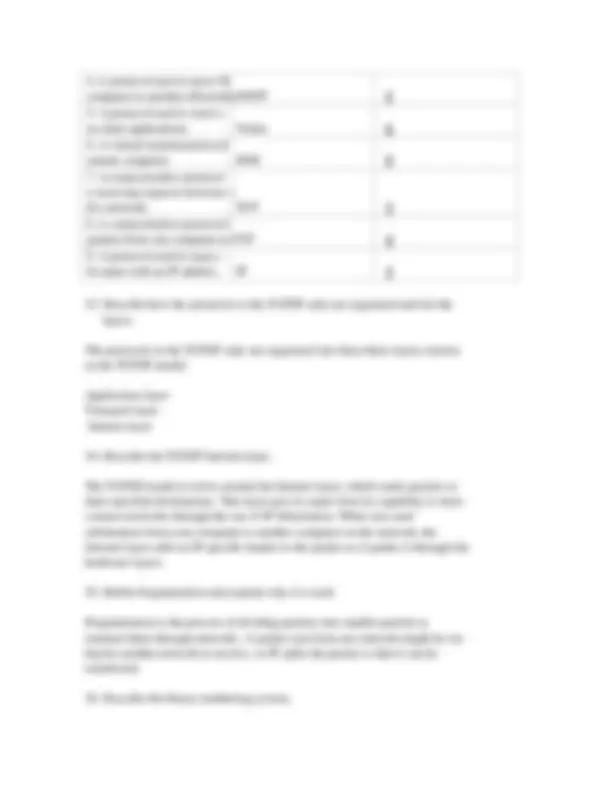
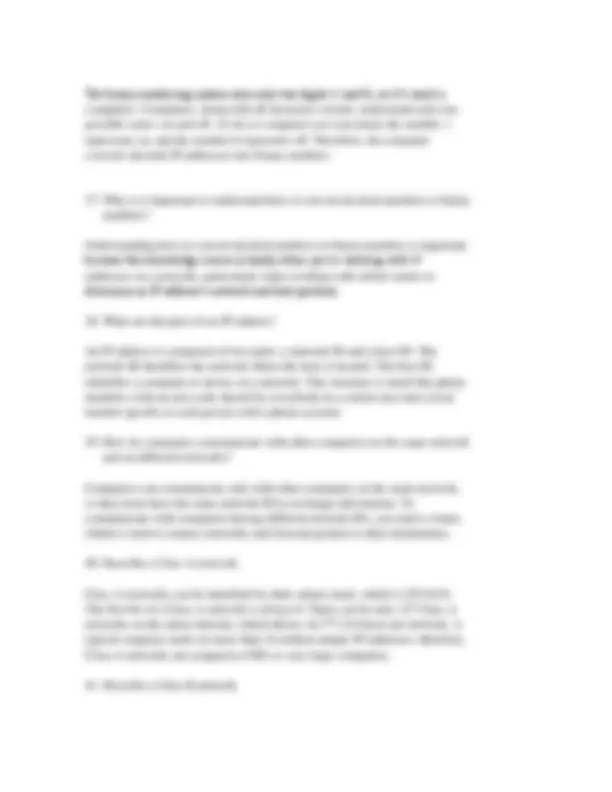
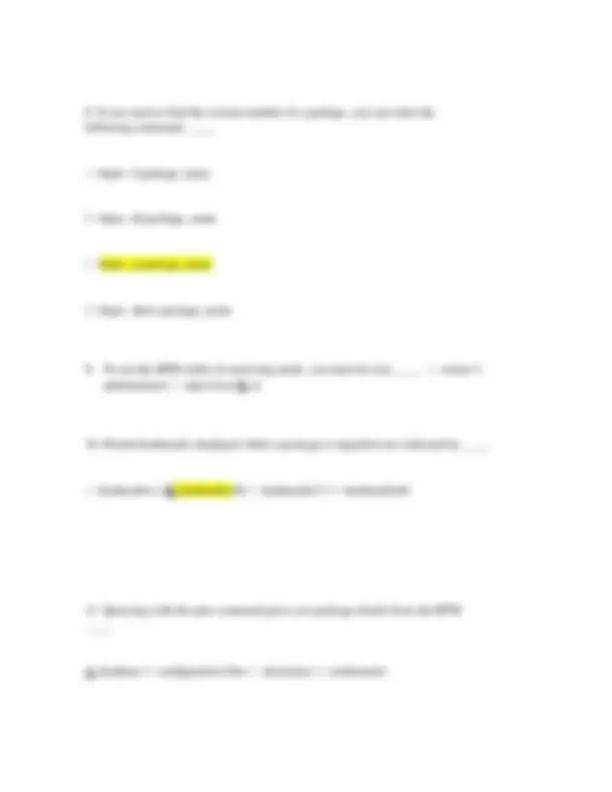
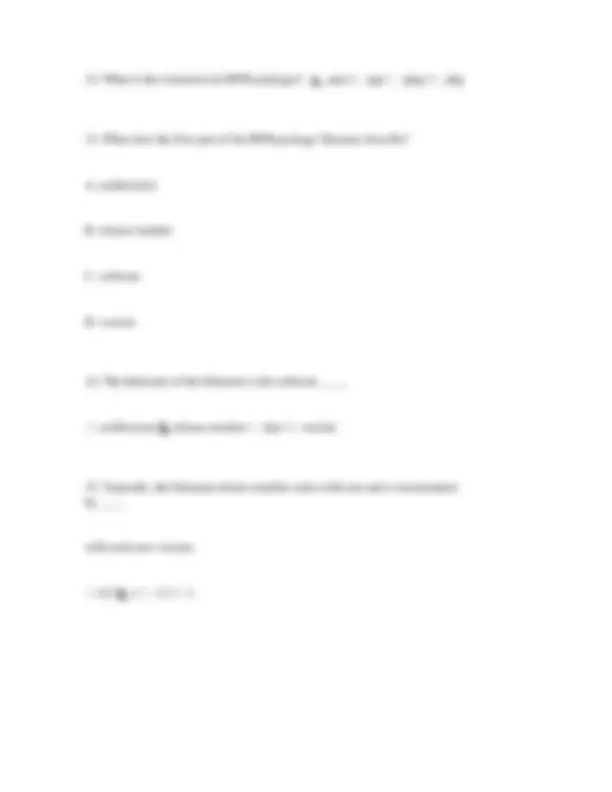
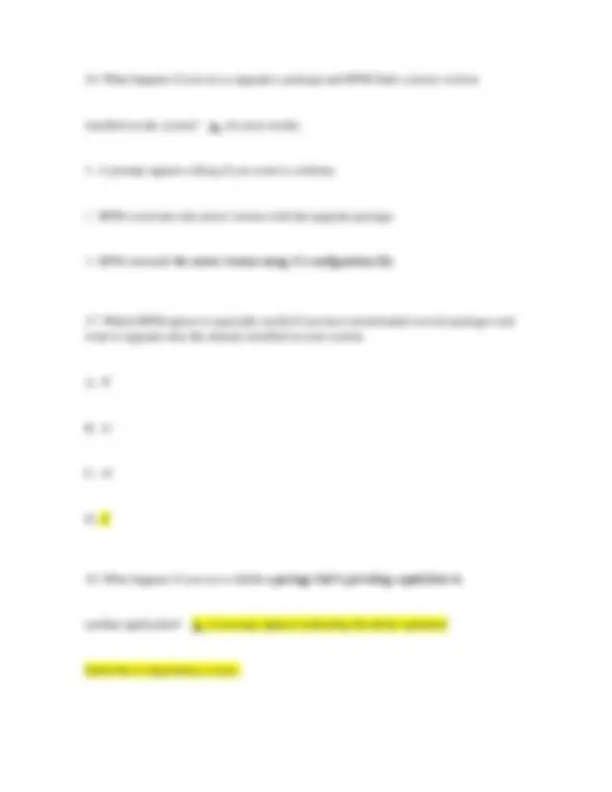
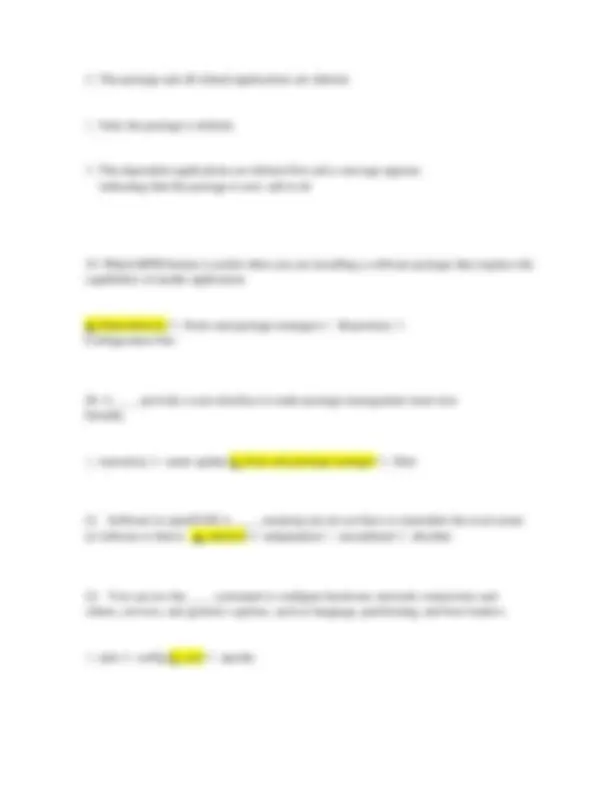
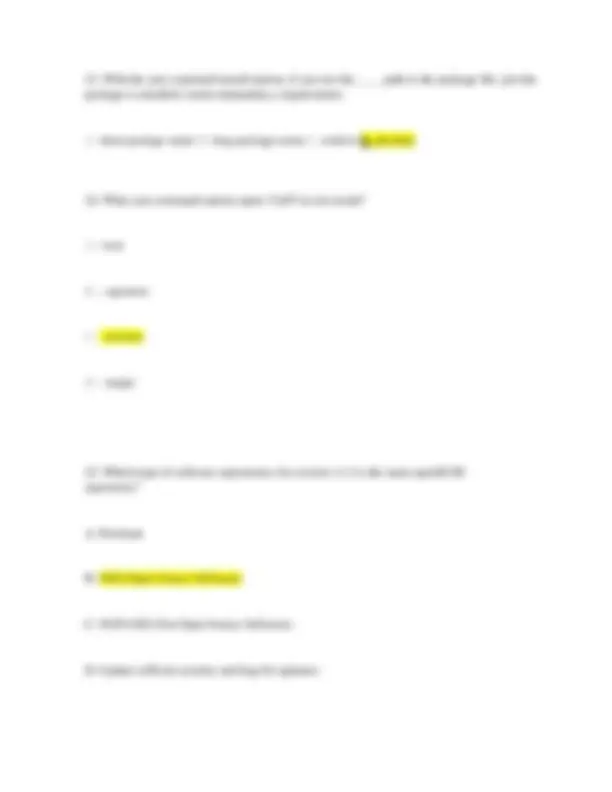
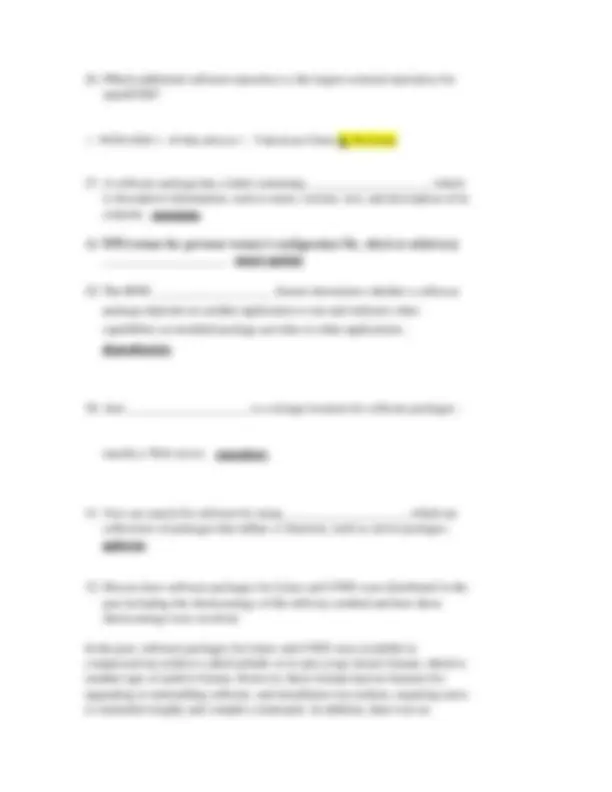
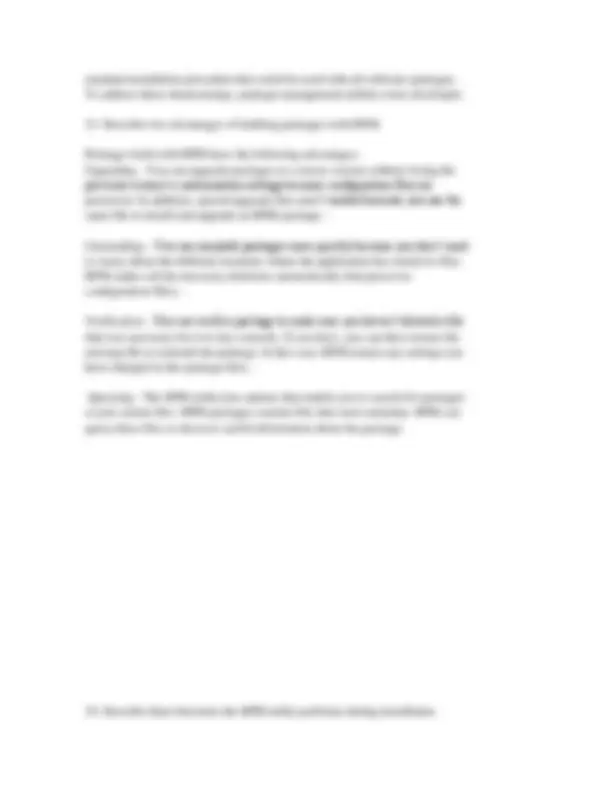
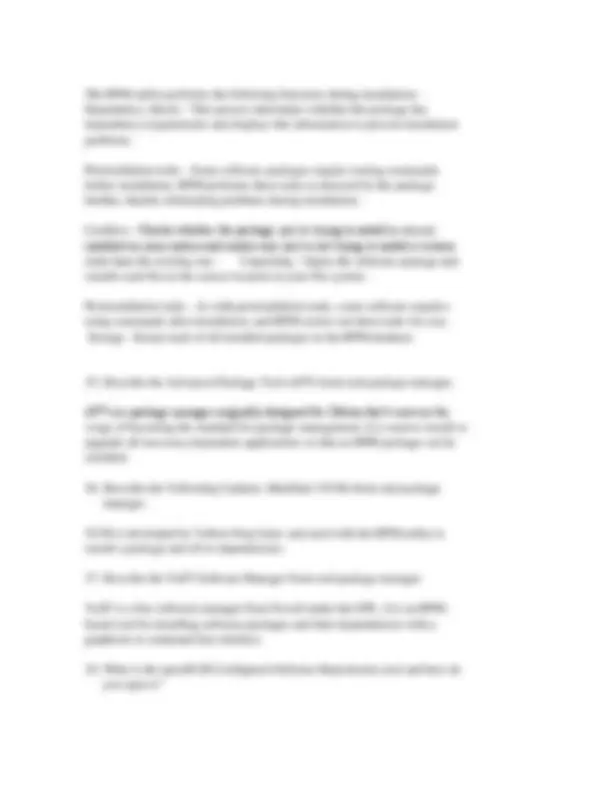
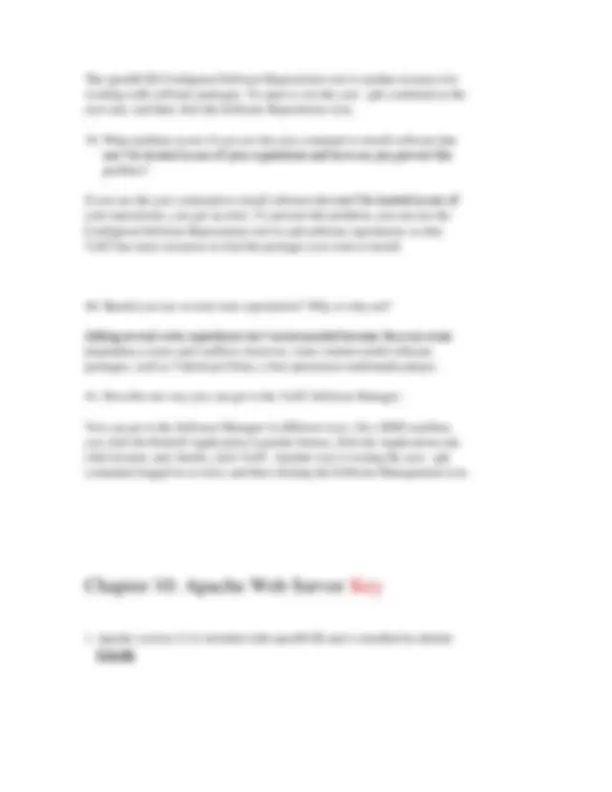
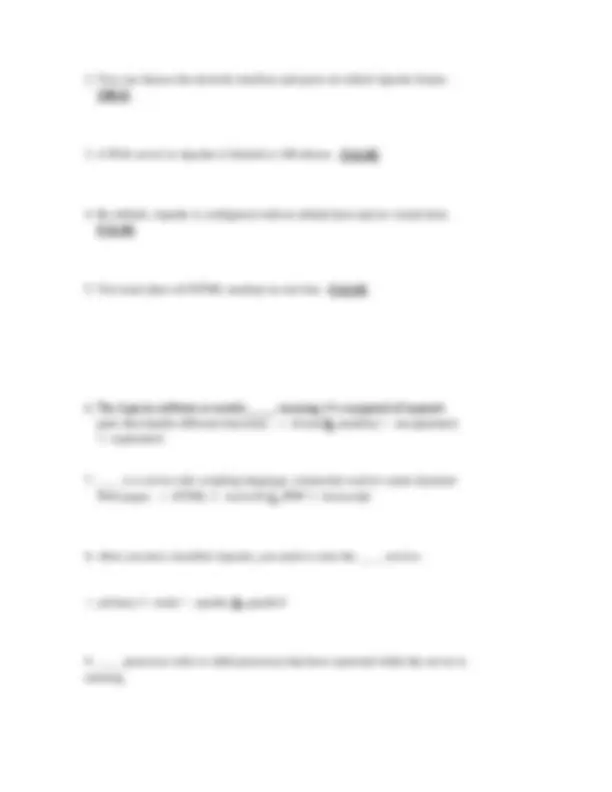
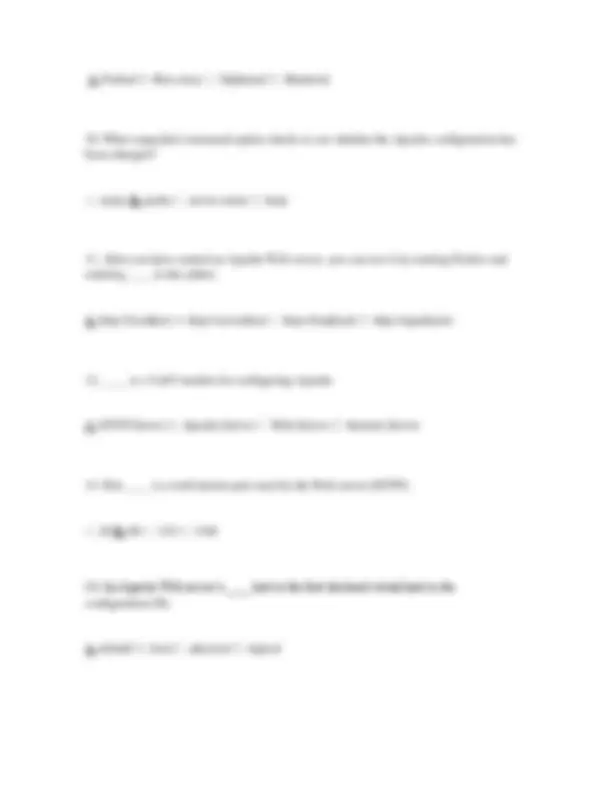
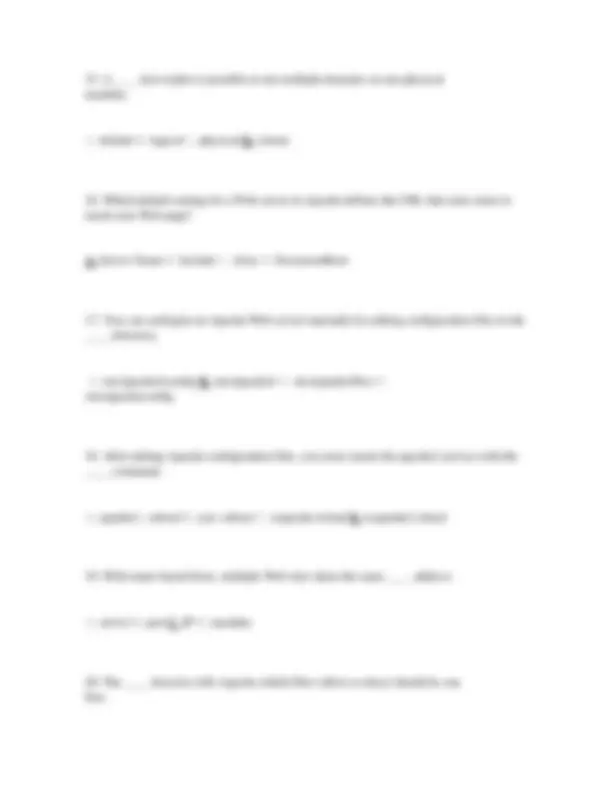
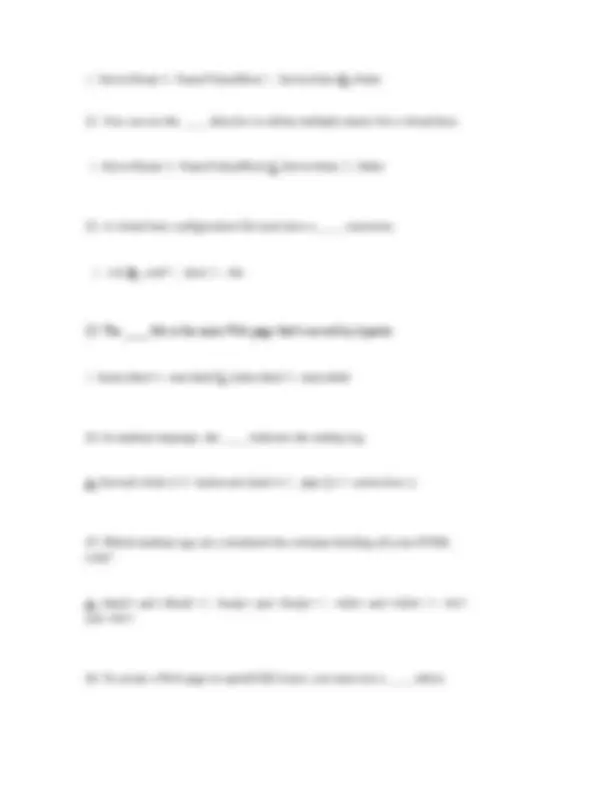
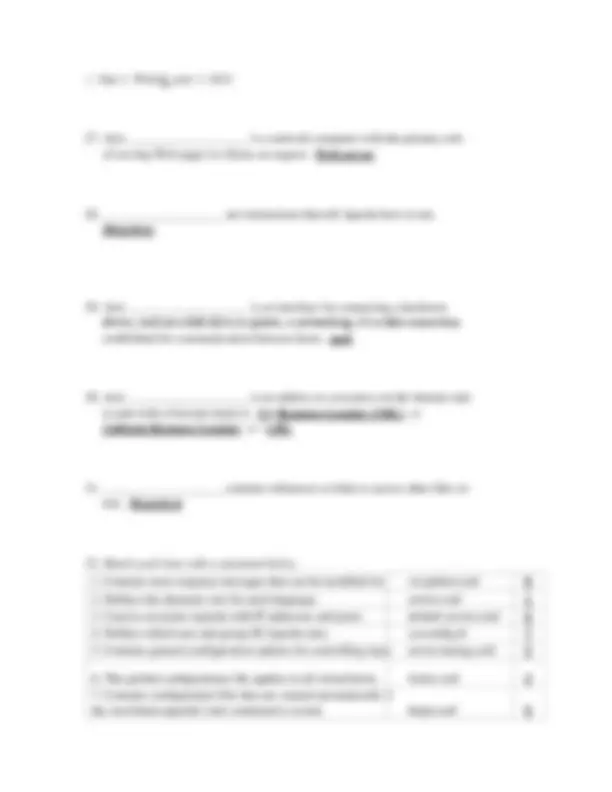
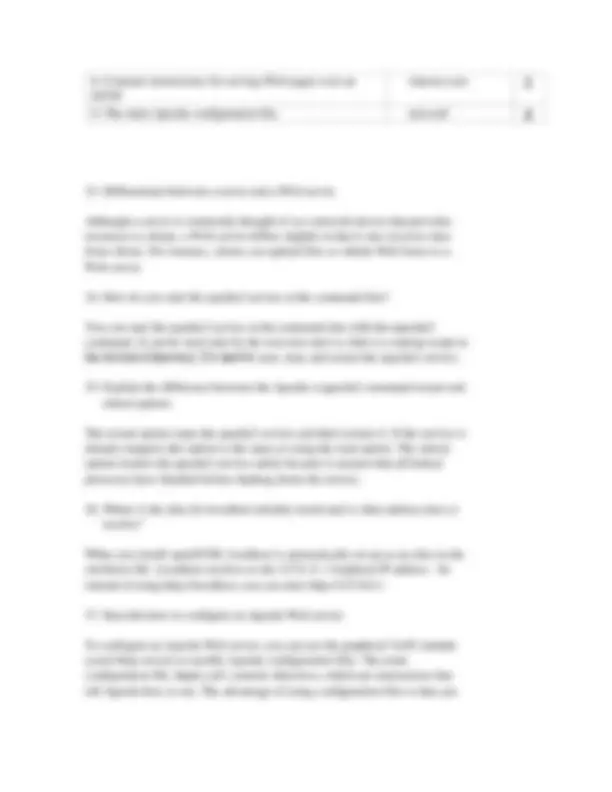
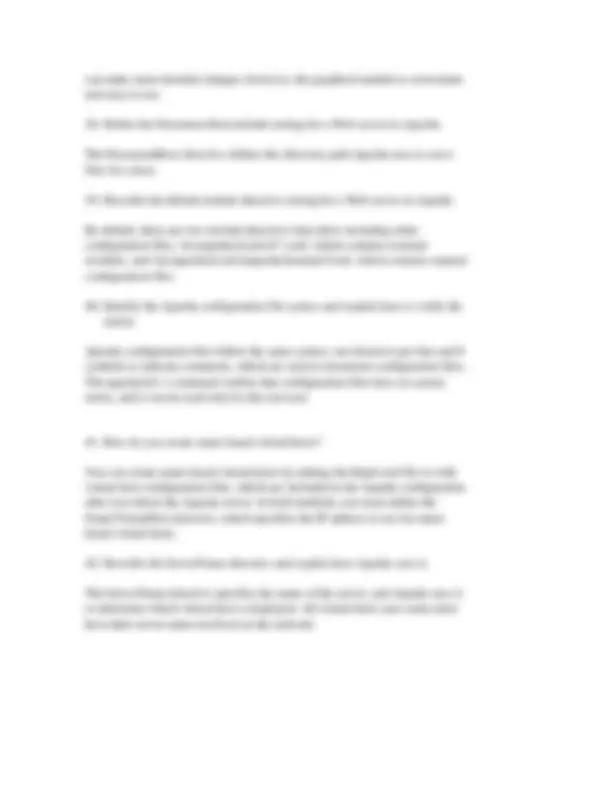
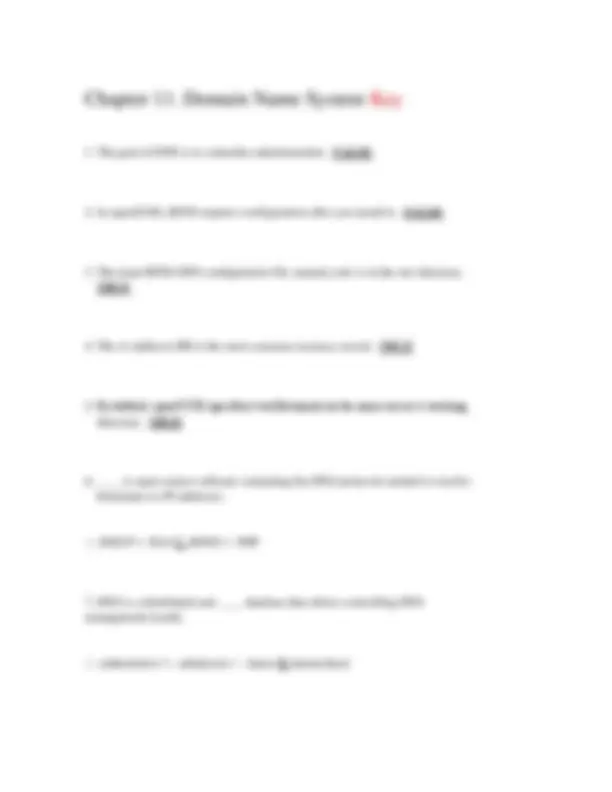
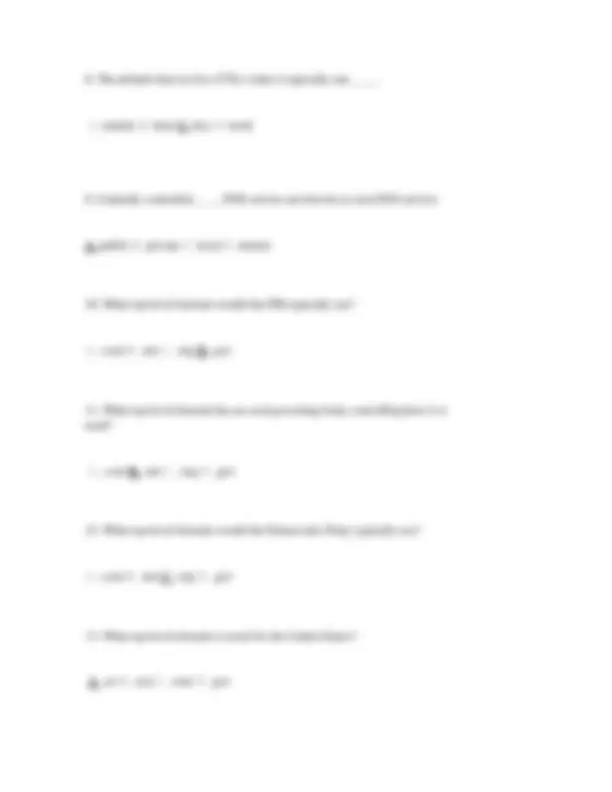
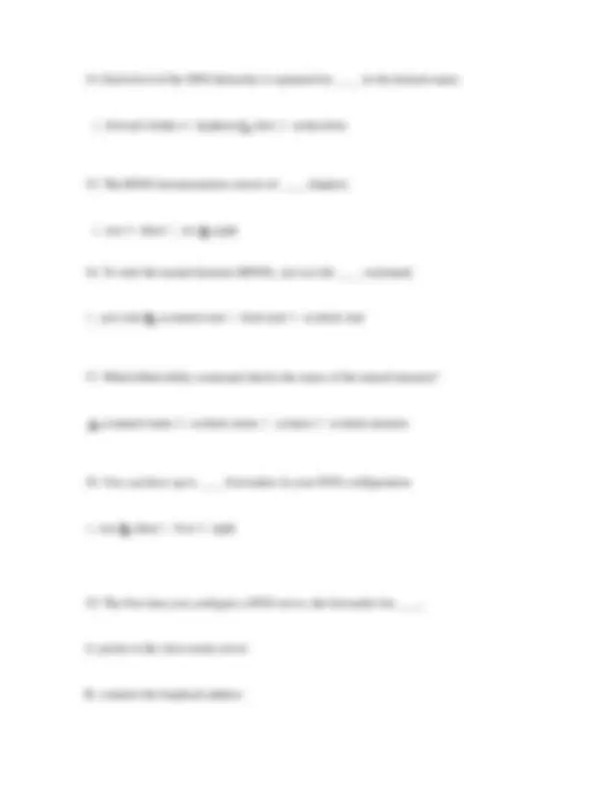
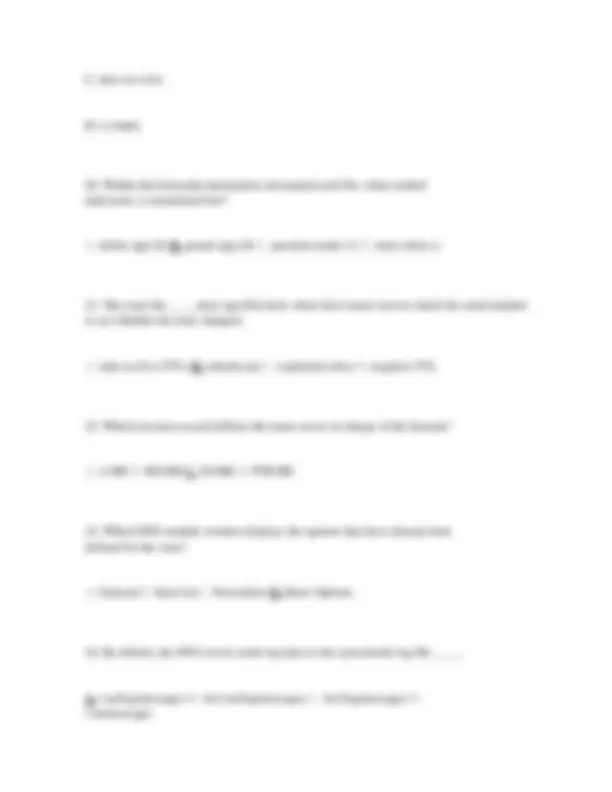
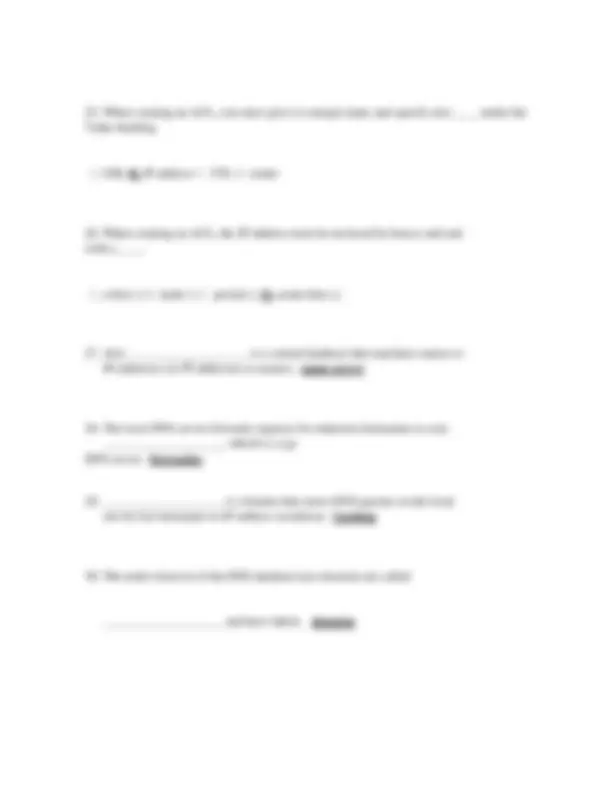
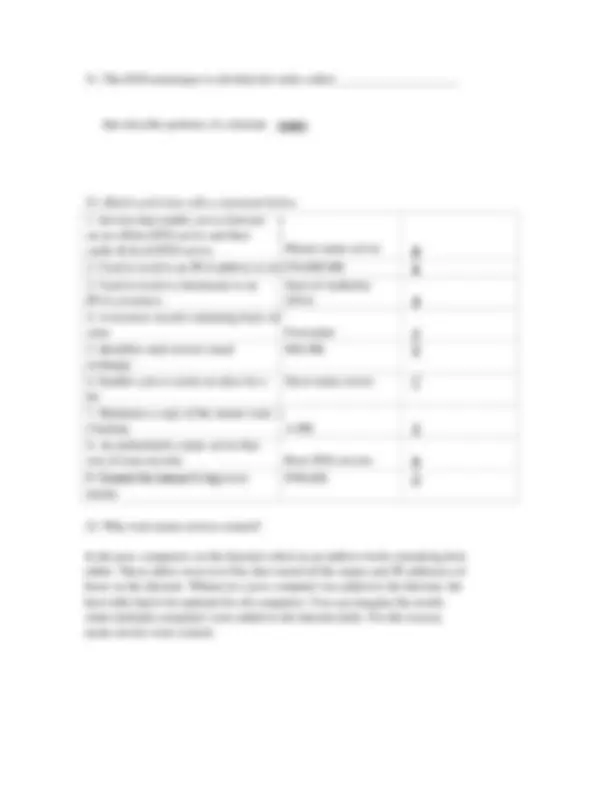
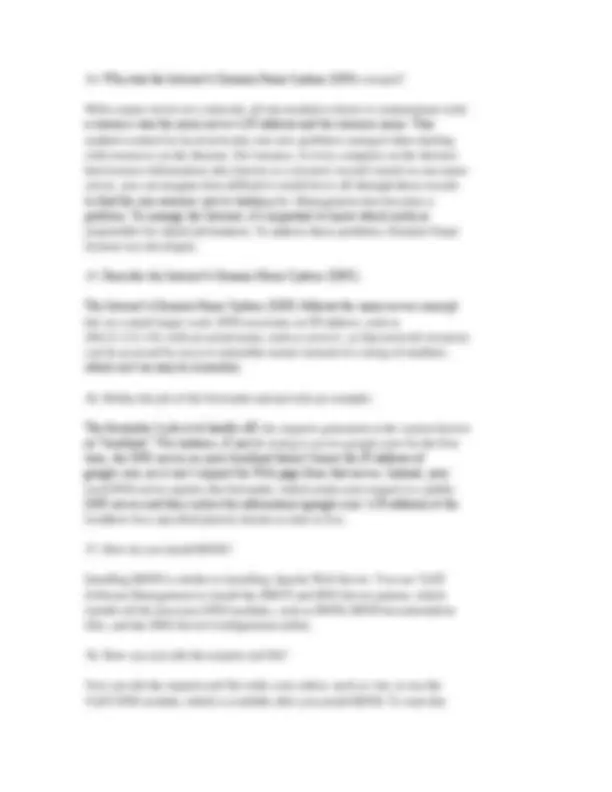
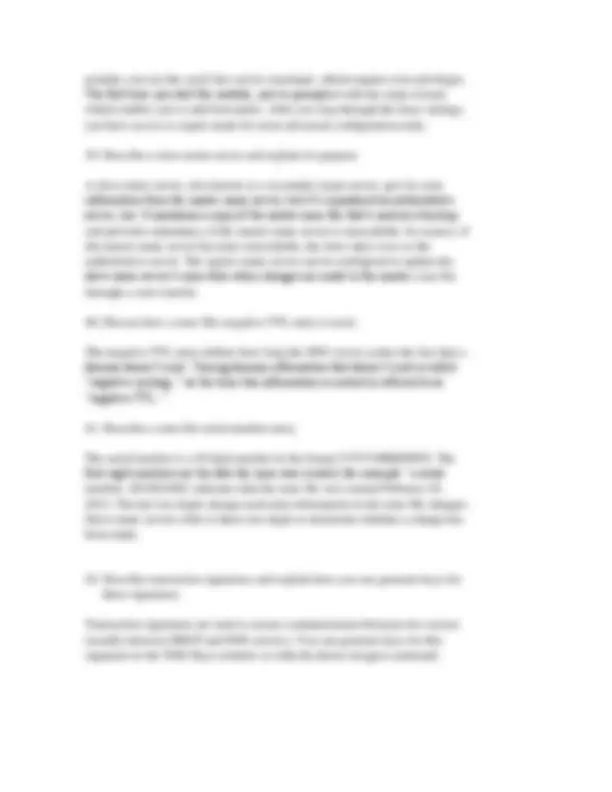
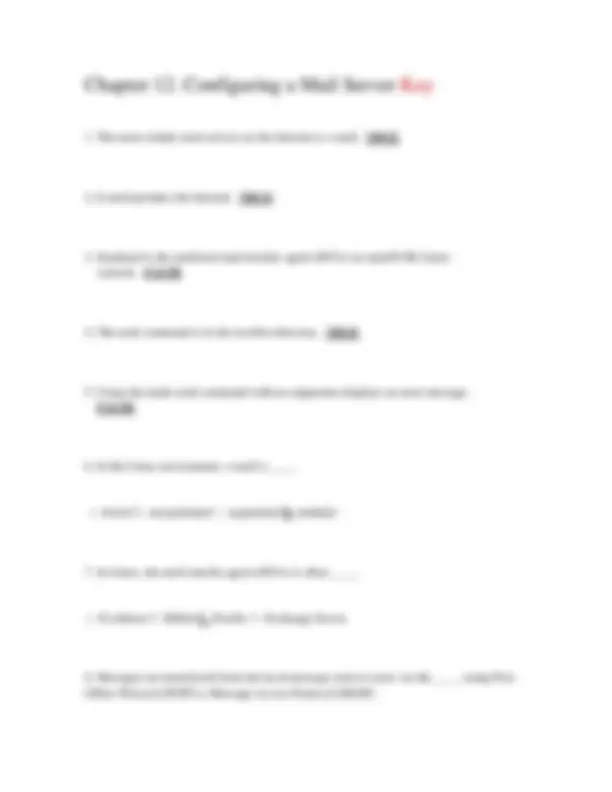
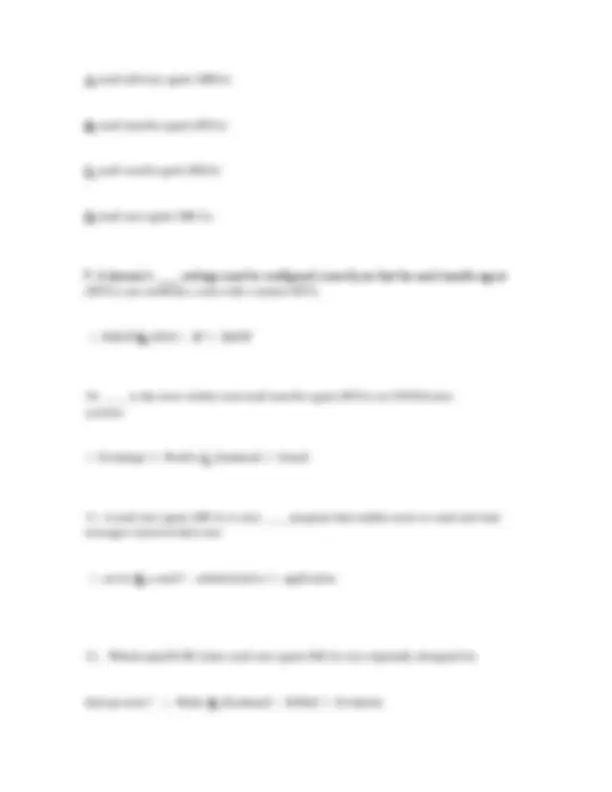
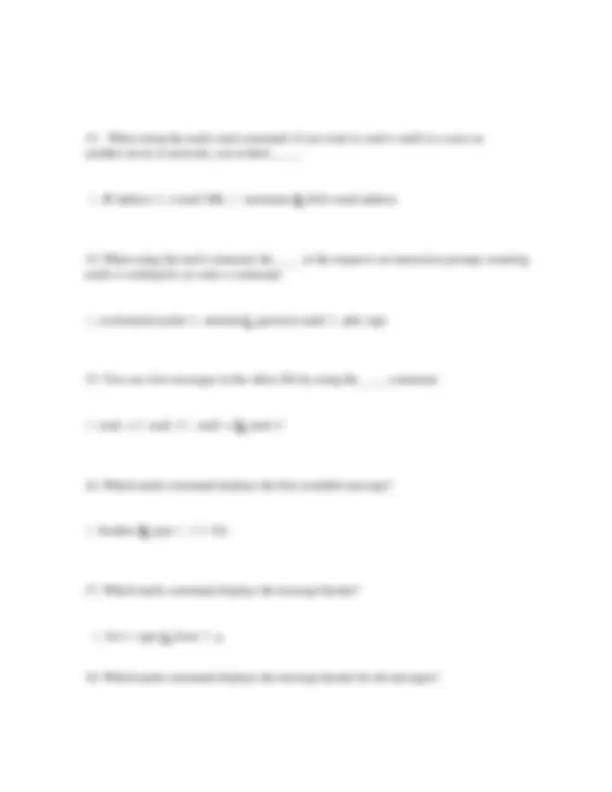
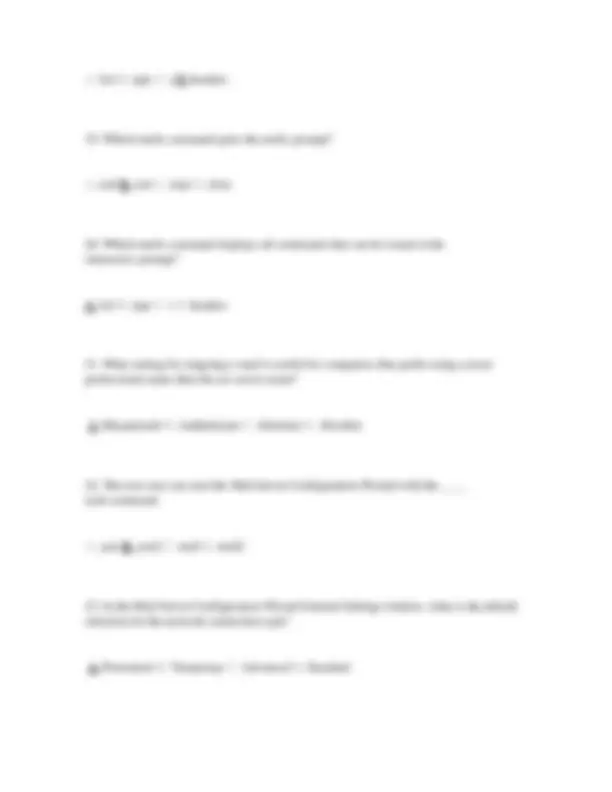
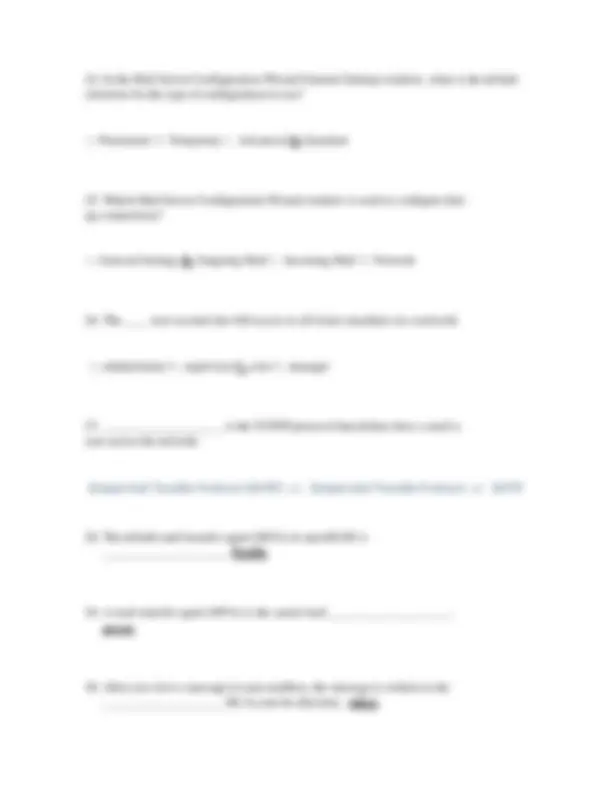
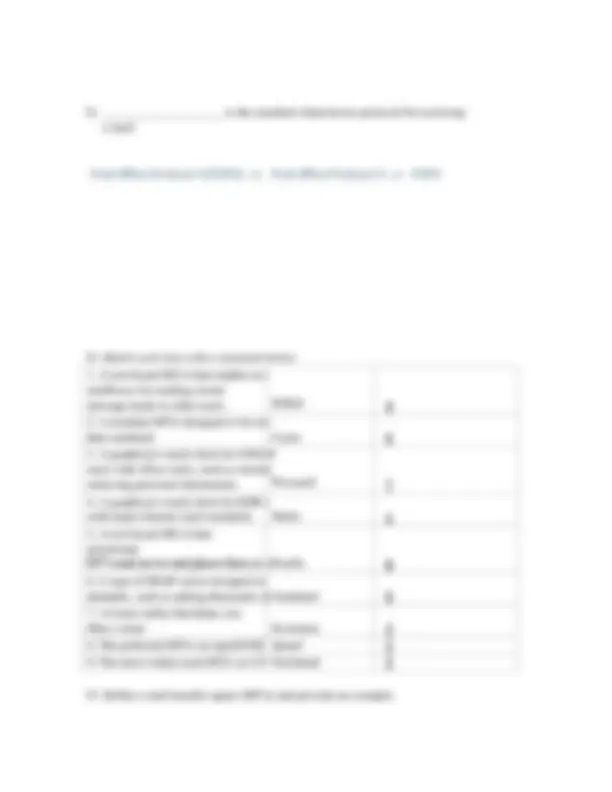
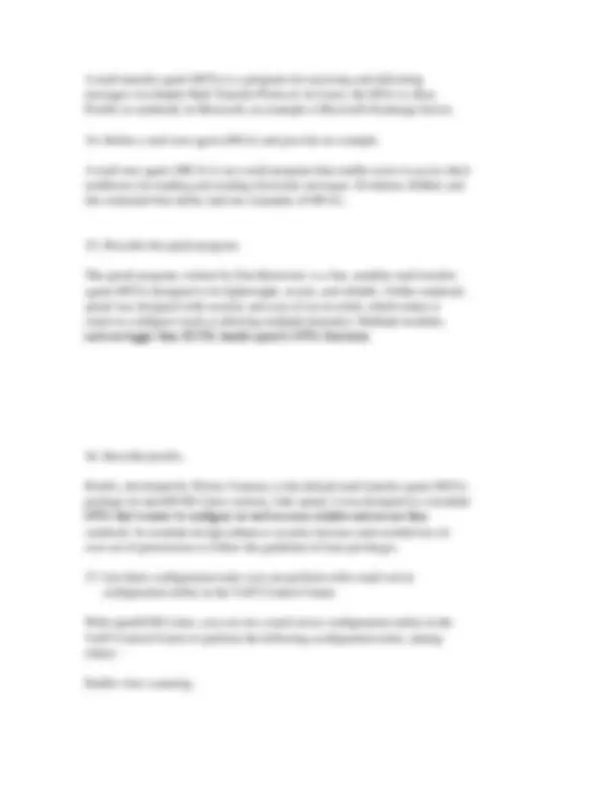
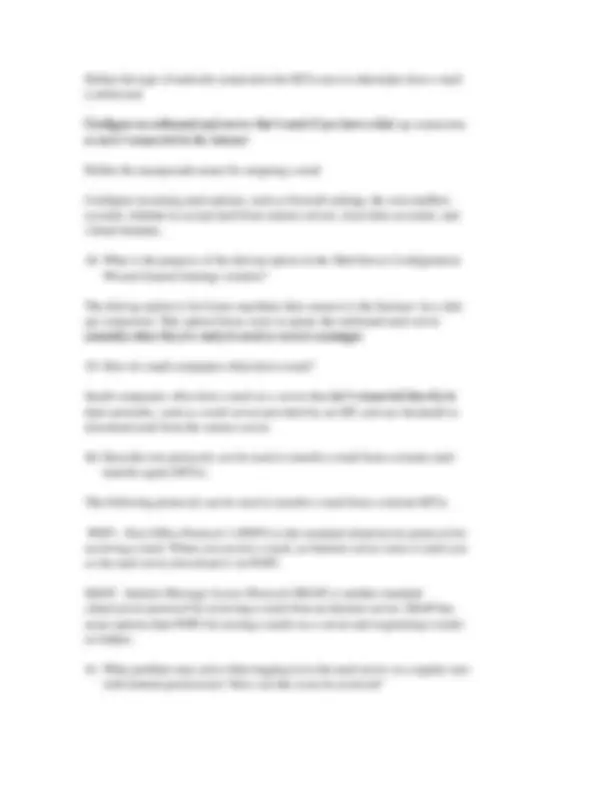
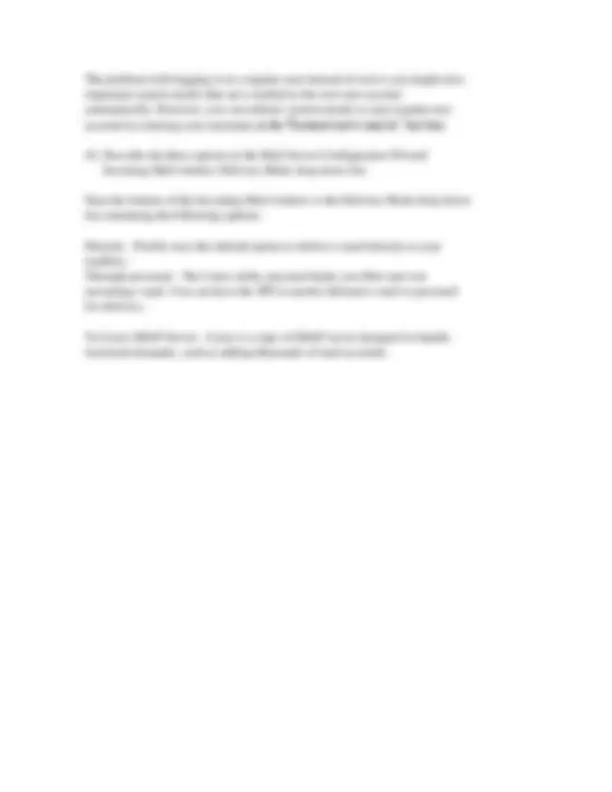


Study with the several resources on Docsity

Earn points by helping other students or get them with a premium plan


Prepare for your exams
Study with the several resources on Docsity

Earn points to download
Earn points by helping other students or get them with a premium plan
Community
Ask the community for help and clear up your study doubts
Discover the best universities in your country according to Docsity users
Free resources
Download our free guides on studying techniques, anxiety management strategies, and thesis advice from Docsity tutors
CIT 315 Test Bank Network management
Typology: Exams
1 / 50

This page cannot be seen from the preview
Don't miss anything!











































A. 20% to 30% B. 60% to 70% C. 70% to 80% D. 100%
your home directory, you would lose the data and the backup. It’s safer to save the tar file to a disk or move it to another location, such as a network drive.
The first five fields of the system cron table are the same as the first five fields of the user cron table. The only difference is in the sixth field. In system cron tables, the sixth field defines the user who’s running the command.
A. port number B. port address C. IP address D. tag number
D. - w n
In Class B networks, the subnet mask is 255.255.0.0. The first two bits of a Class B network are always 10. Class B networks are assigned to large organizations, such as government agencies, universities, and typical companies.